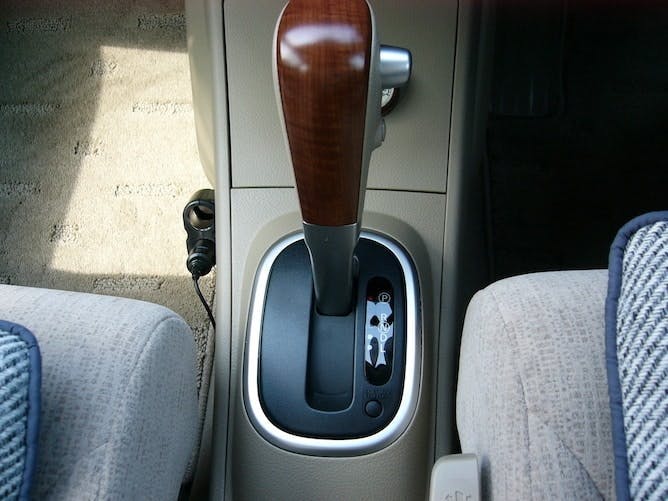
Hill starts: a dreaded phrase to many new learner drivers. Hill starts in an automatic car: only mildly better. Depending on where exactly you’re learning to drive, you might have to start on an incline on a daily basis, or just every now and then. And, even if your car has hill start assist, as many do nowadays, it’s imperative to learn the right technique.
You don’t want to rely too much on a fallible feature, or panic driving a vehicle without it. If you’re scared of attempting to pull away on a hill, struggling with the technique, or don’t know what on earth we’re even on about, have a read of this blog post. Hopefully you’ll feel a lot more confident and knowledgeable by the end.
What is a hill start?

Hill starts are where you have to start the car while you are on a hill, whether you are driving up or down. You may have stopped due to traffic, because you are following instructions on road signs (there may be traffic lights, or a junction on the incline), or have been parked for a longer period of time. This may apply if you live on a hill, or if you have pulled over in order to use your phone or consult a map.
Whatever the reason, you need to know how to hill start correctly—not just because the skill may be examined during your practical test, but because doing it wrong can lead to catastrophic consequences. Rolling down a hill can jeopardise the safety of yourself, other road users and pedestrians. We’re not saying that to scare you—just to emphasise the importance of learning hill starts properly.
The good news is that, hill starts are significantly easier to get to grips with if you’re learning in an automatic car, as opposed to a manual transmission. The even better news is that we’ve explained exactly how to go about it, so you can have a read before you go out on your lessons, or refresh your understanding if you’re struggling to get the hang of it.
How do you do an uphill hill start in an automatic car?

We usually talk about hill starts in the context of clutch control, but in an automatic car, you don’t have a clutch that you can physically release (it’s automatically controlled by the car—hence the term ‘automatic’), so you essentially get to miss out the most difficult aspect!
When you are parked facing uphill, make sure you put your handbrake on. Put the vehicle into Drive mode (indicated by the ‘D’ gear) and press the accelerator gently. Once you feel the car straining to move forward, you can release the handbrake. Apply more pressure to the gas, and you should move away smoothly up the hill. You will have to give the car more revs than you will on the flat—and correspondingly more, the steeper the incline.
Sounds simple enough, right? Well, yes, but just like most driving techniques, it can be easier said than done. When you’re actually sitting on a hill, pulling off can seem really scary, particularly if you haven’t had much experience in doing so. Don’t worry if it takes you a bit of time to get competent at hill starts: practice and persevere, so that you are confident when you find yourself doing them as a solo driver.
Will an automatic car roll back on a hill?
Disclaimer: hill start assist may prevent rolling back for a short time, but it’s best not to rely on the feature too heavily.
There’s a common misconception that it’s impossible to roll backwards on a hill when you’re driving an automatic. The truth is, that just as in a manual car, if you don’t give the car enough revs, you could find yourself rolling down the hill. Panicking in this situation could lead you to make a more dangerous mistake, so the most important thing to do is to keep a cool head.
Put on your handbrake again, and then have another go at pulling away. Make sure you’re pressing down on the accelerator enough for the car to want to move forward. The risk of hill starts going wrong is also why it’s especially important to leave a bit of a gap between you and the vehicle in front when parking. No driver is immune from making the odd mistake, and, just like you don’t want to roll into anybody else, you don’t want them to roll back into you, either.
How do you do a downhill hill start in an automatic car?
Pulling off downhill tends to be a lot easier than uphill hill starts. Gravity is on your side, so you will need far fewer revs to get going. In fact, you’ll probably move forwards as soon as your handbrake is released, providing your foot is off the brake pedal.
Because of this, you need to make sure that you’re still in full control of the car—unintentionally rolling forwards down a hill can lead to the same disastrous results as slipping down backwards. Check that the road is clear ahead of you and you’re safe to pull away, put the car in Drive gear and carefully release your handbrake. Use your foot brake as required to control your speed.
Tips for a smooth hill start in an automatic
On your driving test, the examiner will look for a nice smooth ride–and that includes setting off when you’re sitting on an incline. The key to a smooth hill start in an automatic transmission is getting enough revs, but not too many. If you overdo it on the gas, you’re likely to jerk forwards. This is something you will learn best from practising in your lessons.
Common hazards to look out for when doing a hill start
There are a number of ways hill starts can be dangerous. We’ve already covered the risk of ‘rolling back’, but here are some other hazards to look out for:
1. People crossing the road ahead of you
Before you pull away, take extra care to check if there are pedestrians around who are looking to cross the road. Consider the potential that they may be hidden between parked cars ahead of you.
2. People crossing the road just behind your car
Be particularly wary of this when you’ve stopped at a junction, or in traffic on a hill. They may not leave a safe space between them and your vehicle. This is obviously very dangerous; if you roll backwards, you run the risk of injuring them badly.
3. Other road users
Never assume that people know your intentions. Other road users may not expect you to start moving on a hill, particularly if you’re pulling out, as well as simply pulling off. Always perform all your usual visual and mirror checks, and remember to indicate appropriately.
Just doing research on whether to learn in a manual or automatic car? Check out our blog posts, where we compare the pros and cons of each transmission and how your decision may affect your chance of passing.
Subscribe for driving advice, offers & more
We'd love to let you know about our courses, news and offers via email. You may unsubscribe at any time.
Star Genie Limited trading as PassMeFast. Company number 10093359
Copyright © 2024 owned by Star Genie Limited
PassMeFast, Blue Tower, MediaCityUK, Salford, M50 2ST
